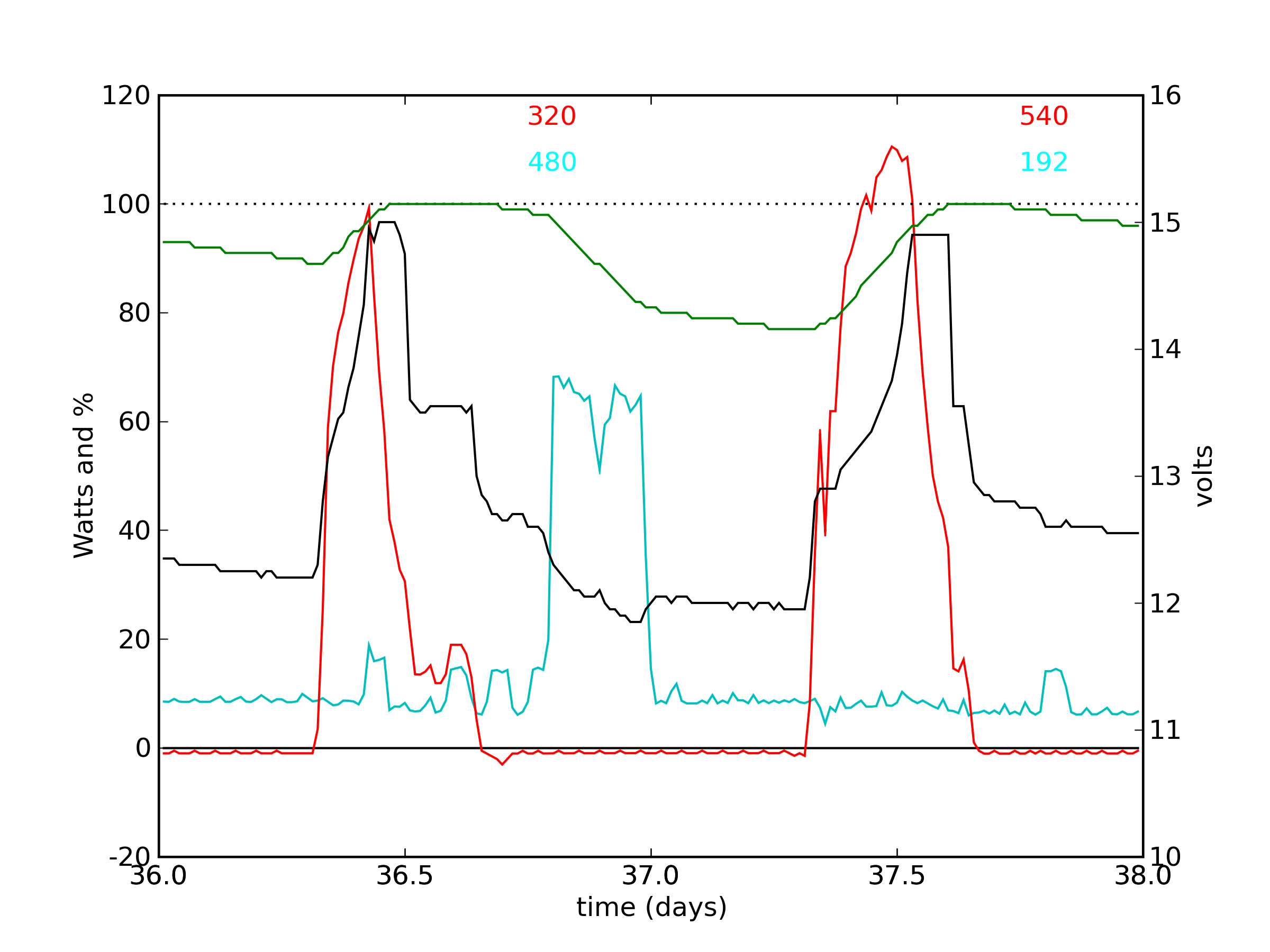
130 W Panel Delivers 110 W

The previous data set was for a series of perfectly sunny days, but the 130 W panel never delivered even a full 100 W. This is partly because the panel never fully achieves 130 W in full sun due to its increased temperature and concomitant inefficiency, and partly due to the fact that the battery reached absorb stage before noon each day, thus reducing the amount of solar power required to charge the battery before the daily peak was reached.
In this case, the night of the 36th day of the year saw many hours of TV-watching (Super-Tuesday primary election results). The next day the charge controller demanded full solar input past noon, and we see that the peak power delivered is about 110 W. Though day 301 of 2007 could have shown the same feature, the panel was not at that time tilted at a high enough angle to take advantage of normal incidence sun—which is indeed the case here.
The small chunks of load usage sprinkled throughout are consistent with the stereo playing a CD or the radio.
Note that the battery barely made it to full charge on the 37th day, as evidenced by the short-lived float stage. Thus we may conclude that 540 W-h is about as much as we can reasonably expect from the single 130 W panel on a sunny day in early February. More power could have been extracted if the battery had not entered absorb and float stages, but at the expense of not fully conditioning the battery.
Previous Data Set | Next Data Set